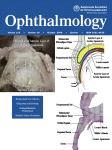In questo studio si dimostra una buona capacità della tecnica OCT nell’individuare la patologia maculare diabetica, senza avere gli inconvenienti di invasività della classica fluorangiografia.
Researchers examined 124 eyes (63 patients) with diabetic retinopathy and 23 control eyes with fluorescein angiography (FA) and high-speed Fourier-domain optical coherence tomography (OCT).
Among the 62 eyes with diabetic retinopathy and FA evidence of either foveal avascular zone (FAZ) damage higher than grade 1 or FAZ capillary loss, OCT detected damage with a positive predictive value of 84.5 percent and negative predictive value of 72.9 percent.
Damage locations seen on FA corresponded well with foveal ganglion cell layer damage on OCT.
In control eyes, foveola size on OCT matched FAZ size on FA.
 Foveal Ganglion Cell Layer Damage in Ischemic Diabetic Maculopathy
Foveal Ganglion Cell Layer Damage in Ischemic Diabetic Maculopathy
Suk Ho Byeon, MD, Young Kwang Chu, MD, Hun Lee, MD, Sang Yeop Lee, MD, Oh Woong Kwon.
Ophthalmology
2009 Oct;116(10):1949-59.e8.
PurposeTo describe the morphologic features of ischemic diabetic maculopathy by high-resolution optical coherence tomography (OCT) and their correlation with the damaged foveal avascular zone (FAZ) on fluorescein angiography (FA).
Design Observational case series.
Participants One hundred twenty-four eyes of 63 patients with diabetic retinopathy and acceptable FA and OCT images were studied. Twenty-three normal fellow eyes of 23 nondiabetic patients with unilateral acute central serous choroidopathy also were studied.
Methods High-speed Fourier-domain OCT was used with a speckle noise-reduction technique to obtain detailed horizontal and vertical images through the center of the fovea and horizontal raster scans every 100 μm. Foveal ganglion cell layer (GCL) damage was identified on OCT as an evident difference in foveal thickness and contour compared with a normal fovea or as asymmetry within the fovea. Fluorescein angiography was performed by confocal scanning laser ophthalmoscope (HRA 2; Heidelberg Engineering, Heidelberg, Germany), and FAZ damage visible during the FA arterial phase was graded according to the Early Treatment Diabetic Retinopathy Study (ETDRS) FA grading system. Correlations were sought between foveal GCL damage identified on OCT and FA capillary dropout sites.
Main Outcome Measures Foveal GCL damage on OCT, the size of the foveola on OCT (defined as the area of GCL thickness
Results Among the 124 eyes with diabetic retinopathy, 62 (50%) had FA evidence of either FAZ damage higher than grade 1 or FAZ capillary loss. In these eyes, damage to the FAZ seen on FA also could be detected on OCT (positive predictive value, 84.5%; negative predictive value, 72.9%), and locations of FAZ damage seen on FA corresponded well with sites of foveal GCL damage on OCT. In nondiabetic, normal eyes, the size of the foveola on OCT matched the size of the FAZ on FA.
Conclusions Evidence of foveal GCL damage on OCT is a good indicator of macular ischemic damage in eyes with diabetic retinopathy. Although in this study FA was more sensitive than OCT in detecting vascular damage, OCT provides objective results and seems to be a good noninvasive substitute for FA.
Financial Disclosure(s) The author(s) have no proprietary or commercial interest in any materials discussed in this article.strong
